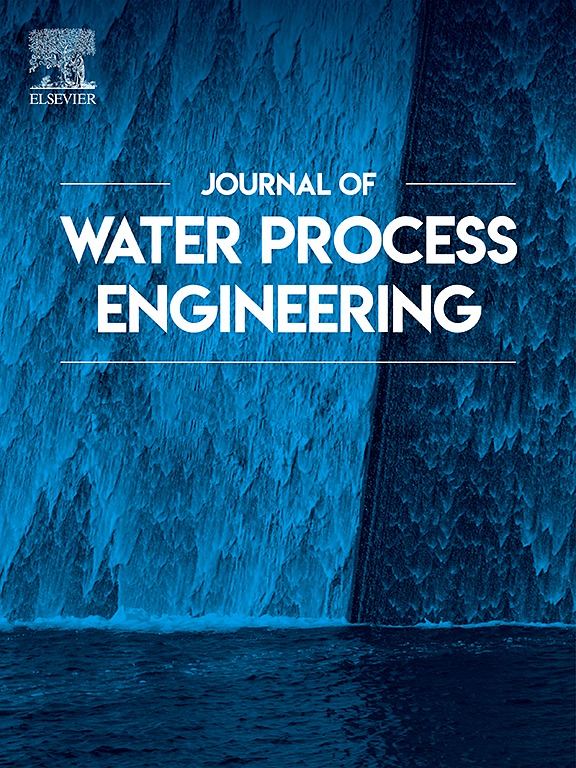Enhanced accuracy and interpretability of nitrous oxide emission prediction of wastewater treatment plants through machine learning of univariate time series: A novel approach of learning feature reconstruction
IF 6.3
2区 工程技术
Q1 ENGINEERING, CHEMICAL
引用次数: 0
Abstract
Nitrous oxide (N2O) is a greenhouse gas (GHG) emitted from wastewater treatment plants (WWTPs), but it is difficult to monitor by conventional methods. Machine learning (ML) have been proposed to predict N2O emissions from WWTPs, on the other hand, univariate time series are widely used in various fields, but the existing shortcomings are difficult to solve, including the low performance and the difficulty of evaluating the interpretability of the model. In this paper, four models, random forest (RF), long short-term memory (LSTM), recurrent neural network (RNN), and support vector machine (SVM), are used to predict the 12-month N2O monitoring data of a WWTP. Meanwhile, taking the dynamic characteristics of the original univariate time series as a multivariate time series. The results show that the R2 of accuracy increases from 0.9768 to 0.9999, the R2 of K-Fold Cross-Validation increases from 0.8966 to 0.9999 for the RF model with the best overall performance and SHAP analysis becomes feasible. The study offers a viable approach to enhancing the precision, resilience, and comprehensibility of the model for monitoring univariate time series in other WWTPs.

求助全文
约1分钟内获得全文
求助全文
来源期刊

Journal of water process engineering
Biochemistry, Genetics and Molecular Biology-Biotechnology
CiteScore
10.70
自引率
8.60%
发文量
846
审稿时长
24 days
期刊介绍:
The Journal of Water Process Engineering aims to publish refereed, high-quality research papers with significant novelty and impact in all areas of the engineering of water and wastewater processing . Papers on advanced and novel treatment processes and technologies are particularly welcome. The Journal considers papers in areas such as nanotechnology and biotechnology applications in water, novel oxidation and separation processes, membrane processes (except those for desalination) , catalytic processes for the removal of water contaminants, sustainable processes, water reuse and recycling, water use and wastewater minimization, integrated/hybrid technology, process modeling of water treatment and novel treatment processes. Submissions on the subject of adsorbents, including standard measurements of adsorption kinetics and equilibrium will only be considered if there is a genuine case for novelty and contribution, for example highly novel, sustainable adsorbents and their use: papers on activated carbon-type materials derived from natural matter, or surfactant-modified clays and related minerals, would not fulfil this criterion. The Journal particularly welcomes contributions involving environmentally, economically and socially sustainable technology for water treatment, including those which are energy-efficient, with minimal or no chemical consumption, and capable of water recycling and reuse that minimizes the direct disposal of wastewater to the aquatic environment. Papers that describe novel ideas for solving issues related to water quality and availability are also welcome, as are those that show the transfer of techniques from other disciplines. The Journal will consider papers dealing with processes for various water matrices including drinking water (except desalination), domestic, urban and industrial wastewaters, in addition to their residues. It is expected that the journal will be of particular relevance to chemical and process engineers working in the field. The Journal welcomes Full Text papers, Short Communications, State-of-the-Art Reviews and Letters to Editors and Case Studies
 求助内容:
求助内容: 应助结果提醒方式:
应助结果提醒方式:


